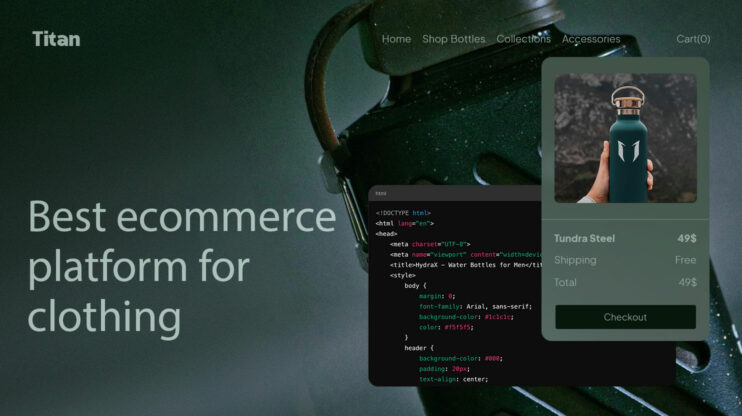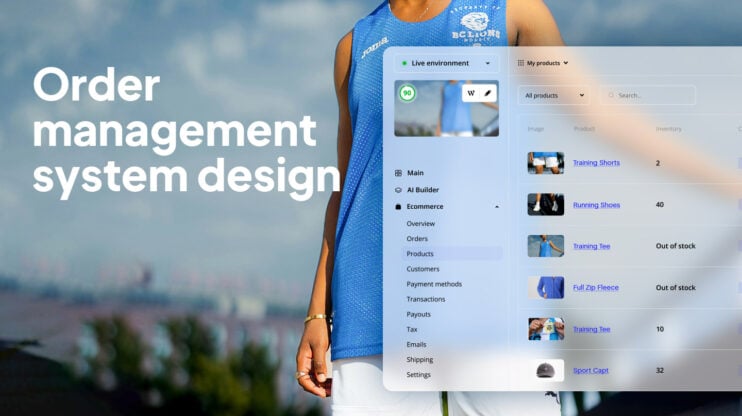Apparel inventory management software helps clothing businesses keep track of their stock. It lets you know how many items you have, what’s selling well, and when to order more. This software can save you time and money by making sure you don’t run out of popular items or have too many things that don’t sell.
Using apparel inventory management software can help your clothing business run more smoothly and make more money. It can show you which styles are most popular, help you plan for busy seasons, and make it easier to manage multiple store locations. With the right software, you can focus on growing your business instead of worrying about inventory problems.
This article explains how apparel inventory management software helps clothing businesses streamline operations, track stock, and reduce costs. It covers key features to consider and it reviews the top 5 solutions to optimize inventory management and support business growth.

Create your online store in minutes!
Looking to sell online? Develop and launch your store with 10Web AI Ecommerce Website Builder.
FAQ
Is there free apparel inventory software? Can I download apparel inventory software for free? How to manage clothing inventory in Excel? What is the best app for clothing inventory? How do I log in to Apparel Magic? What is the best ERP for apparel? What system do clothing stores use for inventory? Which software is best for inventory management? What does inventory management mean in apparel?
Importance of inventory management in fashion retail
Effective inventory management is critical for the success of fashion retail businesses. It helps streamline operations, optimize resources, and meet customer demands efficiently. Here’s why it’s a cornerstone for the industry:
Reducing errors and lowering costs
Accurate inventory management minimizes errors such as overstocking or understocking. Mismanagement can lead to financial losses, with excess inventory tying up cash and unsold items losing value over time. Additionally, proper tracking helps avoid costly mistakes like shipping delays or stock discrepancies. By implementing efficient systems, fashion retailers can lower carrying costs, reduce waste, and improve overall financial health.
Preventing stockouts and enhancing customer satisfaction
Stockouts can damage customer trust and lead to lost sales. With real-time inventory tracking, businesses can ensure popular items are always available. Proactive management also prevents over-reliance on backorders, which can frustrate customers. Keeping stock levels aligned with demand improves customer experience and builds loyalty, giving retailers a competitive edge.
Improving supply chain and demand planning
Inventory management systems integrate with supply chain tools to enhance accuracy and efficiency. They provide insights into demand trends, helping retailers forecast sales and avoid overproduction. This is especially important in fashion, where trends and seasons impact demand significantly. Effective demand planning ensures businesses have the right products at the right time, optimizing supply chain performance and reducing excess inventory.

Create your online store in minutes!
Looking to sell online? Develop and launch your store with 10Web AI Ecommerce Website Builder.
Benefits of apparel inventory management software
Apparel inventory management software helps clothing businesses track stock, streamline operations, and boost profits. It offers valuable tools for retailers and wholesalers in the fashion industry.
Efficiency and accuracy enhancement
Apparel inventory software speeds up tasks and cuts down on errors. It lets you scan barcodes to update stock levels fast. This saves time compared to manual counting. You can also set up automatic reorder points. When an item gets low, the system tells you to buy more.
The software tracks sizes, colors, and styles for each product. This makes it easy to see what’s selling well and what’s not. You can use this info to make smarter buying choices. It also helps prevent overselling by showing real-time stock levels across all your sales channels.
Cost reduction strategies
Good inventory management cuts costs in several ways. It helps you avoid overstocking, which ties up cash in unsold goods. You can see which items don’t sell well and stop ordering them. This frees up space and money for better-selling products.
The software also helps reduce waste from outdated stock. You can spot slow-moving items and put them on sale before they go out of style. This improves cash flow and keeps your inventory fresh.
By tracking sales patterns, you can order just enough stock to meet demand. This cuts storage costs and reduces the risk of items getting damaged in the warehouse. You’ll spend less on insurance and handling too.
Challenges in apparel inventory management
Managing inventory in the apparel industry comes with unique challenges that can impact efficiency, profitability, and customer satisfaction. Here are some of the most common issues:
- Inconsistent tracking: Poor inventory tracking can lead to errors such as stockouts or overstocking. Without accurate, real-time data, businesses may struggle to know what’s available across different sizes, colors, and styles. This inconsistency can disrupt sales and customer satisfaction.
- Inefficient utilization: Mismanaged storage space and inefficient stock organization often result in slow operations and increased overhead costs. Apparel businesses may face difficulties in locating specific items quickly, leading to delayed order fulfillment and wasted resources.
- Incorrect demand forecasting: Predicting demand for specific styles, sizes, or seasonal trends is challenging. Inaccurate forecasts can result in excess inventory that ties up cash flow or insufficient stock that fails to meet customer needs, affecting revenue and brand reputation.
- Handling seasonal variations: Fashion retail is heavily influenced by seasons, and managing seasonal demand requires careful planning. Businesses often face challenges in aligning production and purchasing with fluctuating customer demand, which can result in either wasted inventory or missed sales opportunities.
- Multi-channel complexity: Retailers selling across multiple channels—physical stores, online platforms, and marketplaces—often struggle to synchronize inventory data. Discrepancies between channels can lead to overselling, underselling, or logistical headaches.
- Returns and exchanges: High return rates, especially in apparel, add complexity to inventory management. Processing returns, restocking items, and tracking changes can lead to errors and inefficiencies if not handled properly.
Addressing these challenges requires powerful inventory management solutions tailored to the needs of apparel businesses. By leveraging the right tools and strategies, retailers can overcome these obstacles and create a more streamlined, profitable operation.
Key features to consider
When choosing apparel inventory management software, you need to look at a few important things. These features can make a big difference in how well the system works for your business.
Real-time inventory tracking
Real-time inventory tracking helps you keep tabs on your stock levels as they change. You can see how many items you have in each size and color right away. This stops you from selling things you don’t have.
The software updates your stock counts every time you make a sale or get a new shipment. You can set up alerts to tell you when items are running low. This way, you can order more before you run out.
Some systems let you track stock across different stores or warehouses. You can move items between locations to meet demand. Real-time tracking also helps you spot trends in what’s selling fast or slow.
Integration capabilities
Good apparel inventory software works well with other tools you use. It should connect to your point-of-sale system to update stock levels when you make sales. Links to your ecommerce platform keep online and in-store inventory in sync.
Look for software that can work with your accounting system. This makes it easier to track the value of your inventory and sales. Some systems can also link to shipping software to help with order fulfillment.
Integration with supplier catalogs can speed up restocking. You can see what items are available and place orders right from your inventory system.
Scalability options
As your business grows, your inventory software needs to keep up. Scalable systems let you add more products, users, or features as you need them. You want software that can handle a larger catalog without slowing down.
Check if the software offers different plans or modules. This lets you start small and add features as your needs change. Some systems charge based on the number of items or transactions you have.
Look for cloud-based options that can grow with your business. These often let you access your inventory data from anywhere. They can also make it easier to add new store locations to your system.

Create your online store in minutes!
Looking to sell online? Develop and launch your store with 10Web AI Ecommerce Website Builder.
Top 5 apparel inventory management software
This section highlights the top 5apparel inventory management software options to help clothing businesses efficiently track stock, streamline operations, and manage sales channels. Each tool is reviewed with its key features, pros, and cons, making it easier to find the right fit for your apparel business.
1. Zoho Inventory
Zoho Inventory helps clothing stores keep track of their stock. It’s a tool that connects with online shops to show real-time updates of what’s in stock. You can use it to manage your suppliers and customers too.
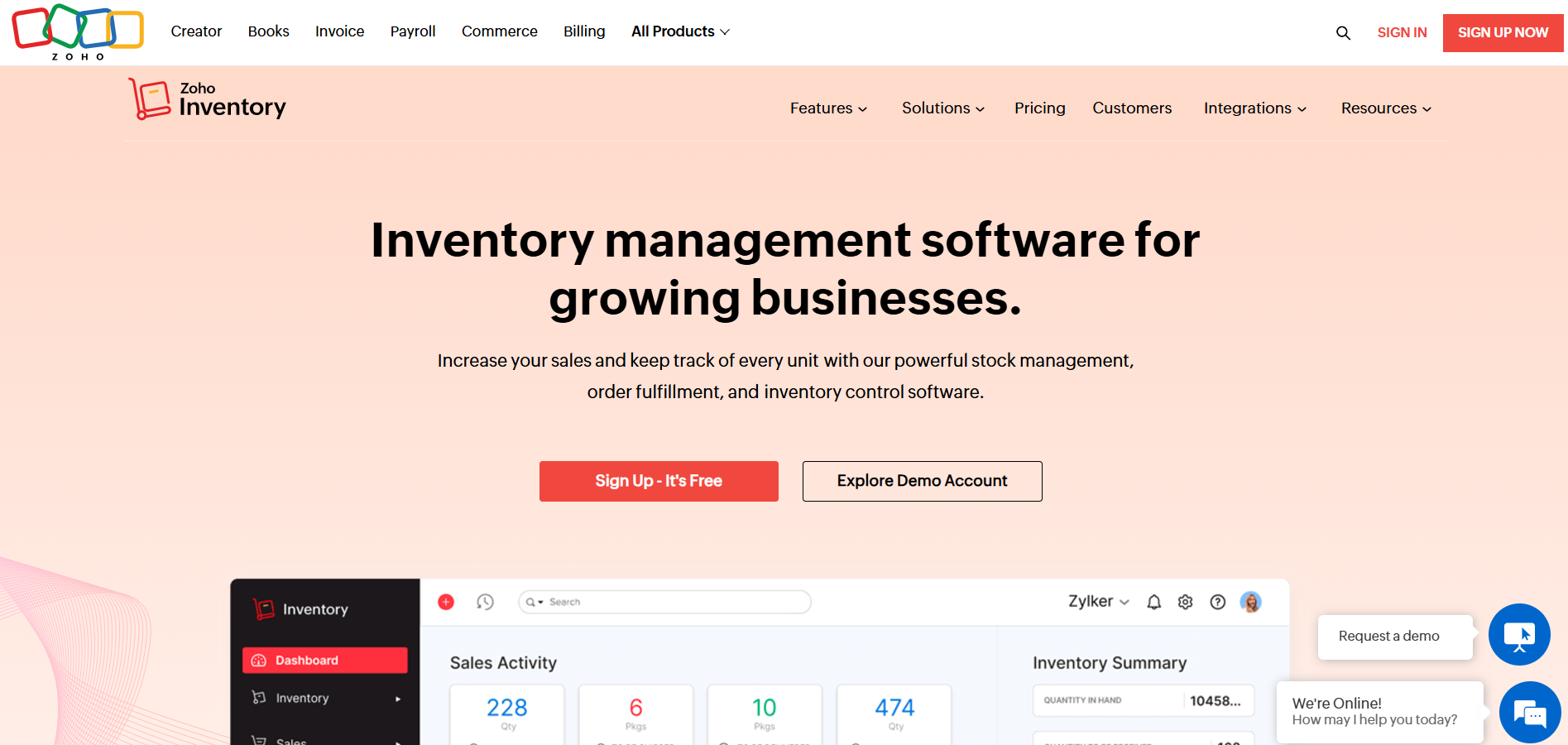
The software lets you create purchase orders easily. This means you can quickly reorder items when they run low. You can also set up alerts to tell you when it’s time to restock.
Small and growing clothing businesses often use Zoho Inventory. It’s good for shops that sell both online and in physical stores. The tool works well for boutiques, T-shirt companies, and other apparel sellers.
| Pros | Cons |
| Free plan available | May be too complex for very small shops |
| Connects with ecommerce platforms | Some features only in paid plans |
| Helps with order fulfillment | Might need time to learn all features |
Zoho Inventory is part of a larger set of business tools. This means you can use it with other Zoho apps if you need to. The apparel inventory management software is designed to grow with your business as it gets bigger.
2. Fishbowl Inventory
Fishbowl Inventory is a popular inventory management software for apparel businesses. It works with QuickBooks and Xero to help you track your clothing stock. You can manage multiple warehouse locations and handle complex manufacturing tasks.
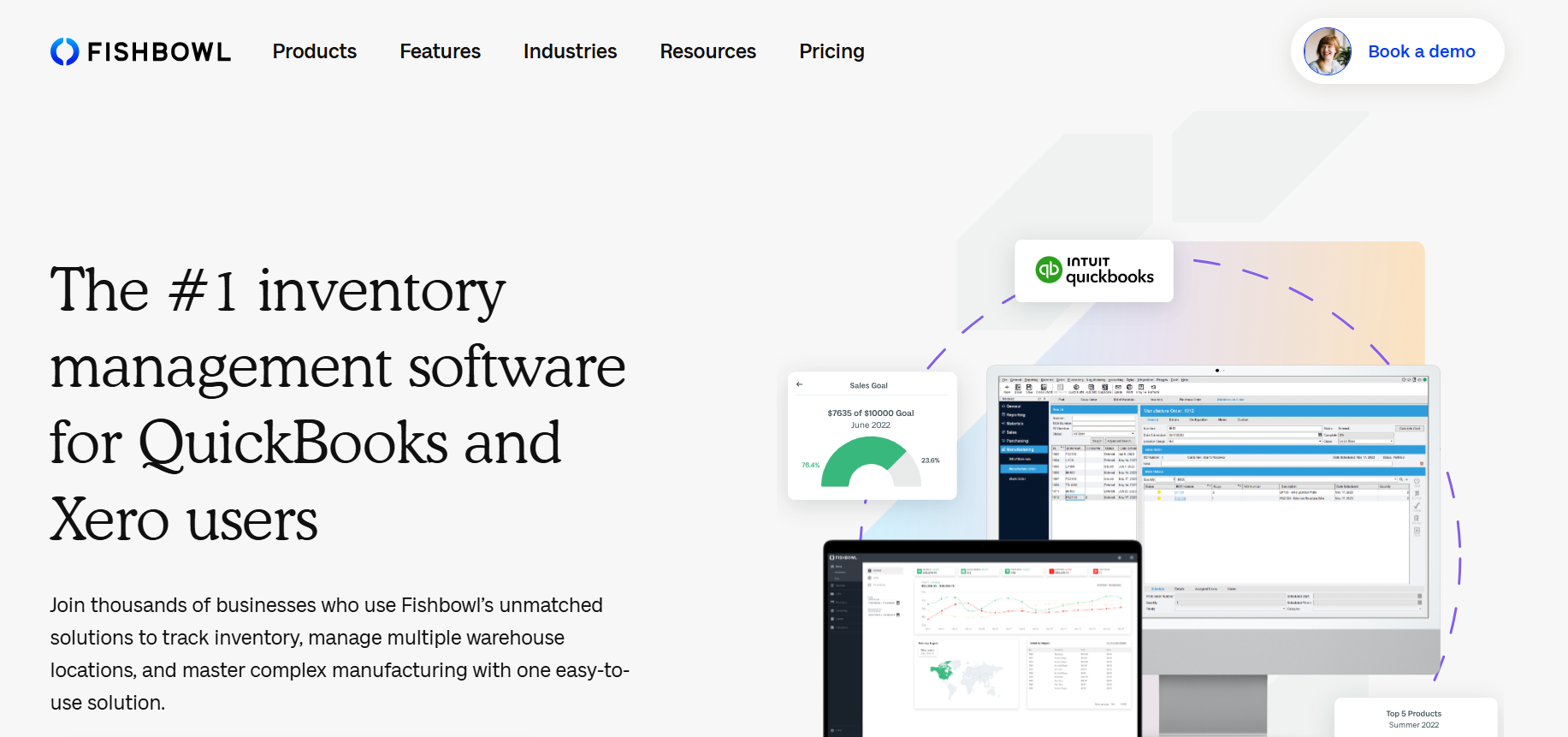
With Fishbowl, you can process customer orders quickly. The system shows you updates, issues, and shipping details in one place. This makes it easier to keep track of your apparel inventory as it moves through your business.
Fishbowl offers features like barcode scanning and bill of materials management. These tools can help you stay on top of your clothing stock levels and production needs. The software also helps with packing and shipping your apparel orders.
Many small to medium-sized apparel companies use Fishbowl. It’s a good fit for clothing manufacturers, distributors, and wholesalers. The software can be customized to fit your specific needs in the apparel industry.
| Pros | Cons |
| Works with QuickBooks and Xero | Can be pricey for small businesses |
| Manages multiple warehouses | May have a learning curve |
| Offers barcode scanning | Some features might be too complex for basic needs |
3. NetSuite
NetSuite offers inventory management software for apparel companies. It lets you track stock levels across all your locations and sales channels in real-time.
You can use NetSuite to reduce excess inventory and avoid running out of products. This helps free up cash while making sure you can fulfill customer orders.
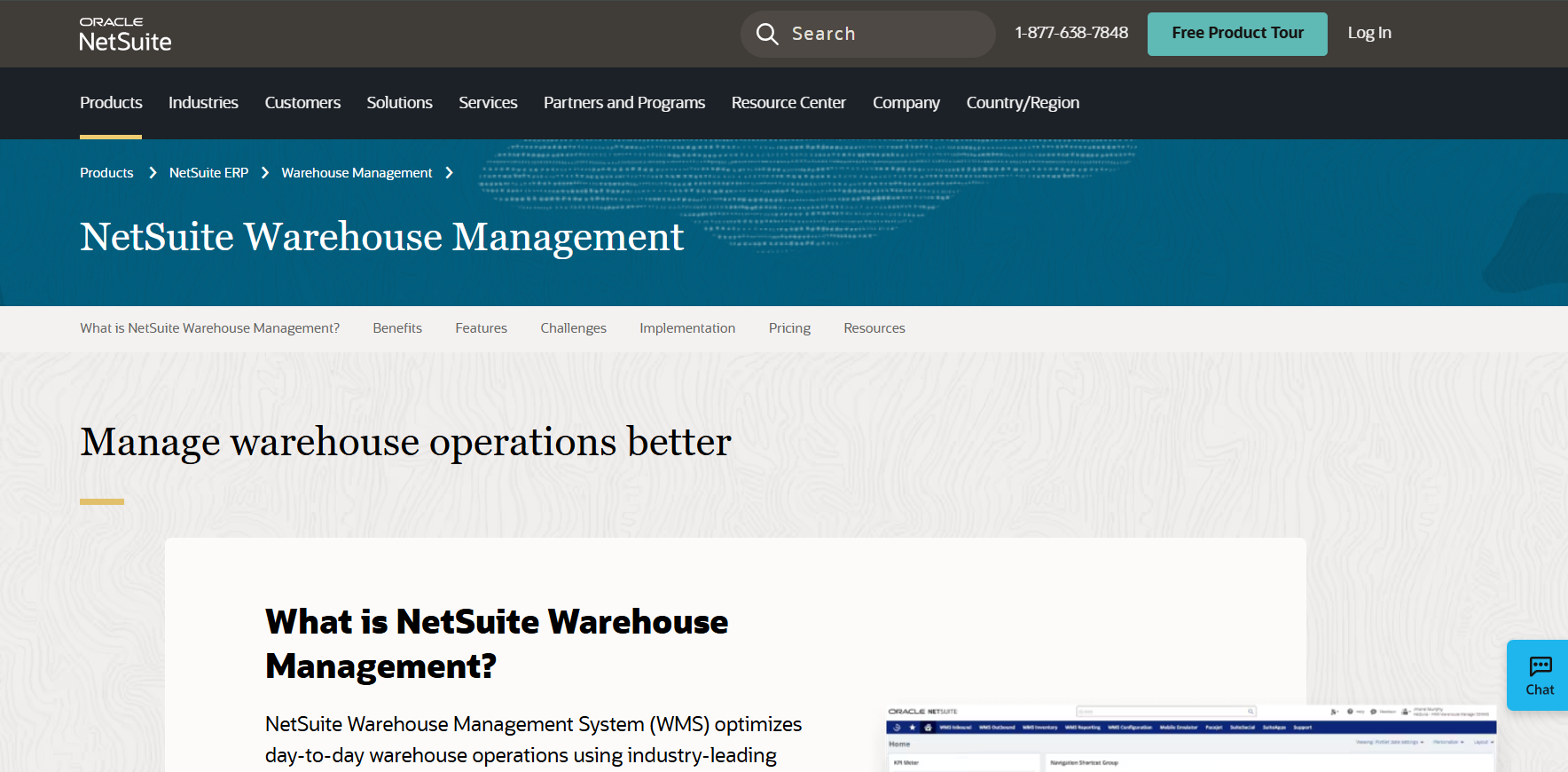
The software integrates with other business systems like accounting and ecommerce platforms. This gives you a single view of your entire apparel business.
NetSuite has features designed for fashion companies. You can manage styles, sizes, colors, and seasons. It also handles tasks like order management and fulfillment.
| Pros | Cons |
| Real-time inventory tracking | Can be complex to set up |
| Fashion-specific features | May be pricey for small businesses |
| Integrates with other systems | Requires staff training |
Many apparel, footwear, and accessory brands use NetSuite. It works for small businesses up to large enterprises. The software is cloud-based, so you can access it from anywhere.
4. Ordoro
Ordoro is an apparel inventory management software that helps online retailers handle their stock efficiently. It offers features designed to simplify inventory tracking and order fulfillment.
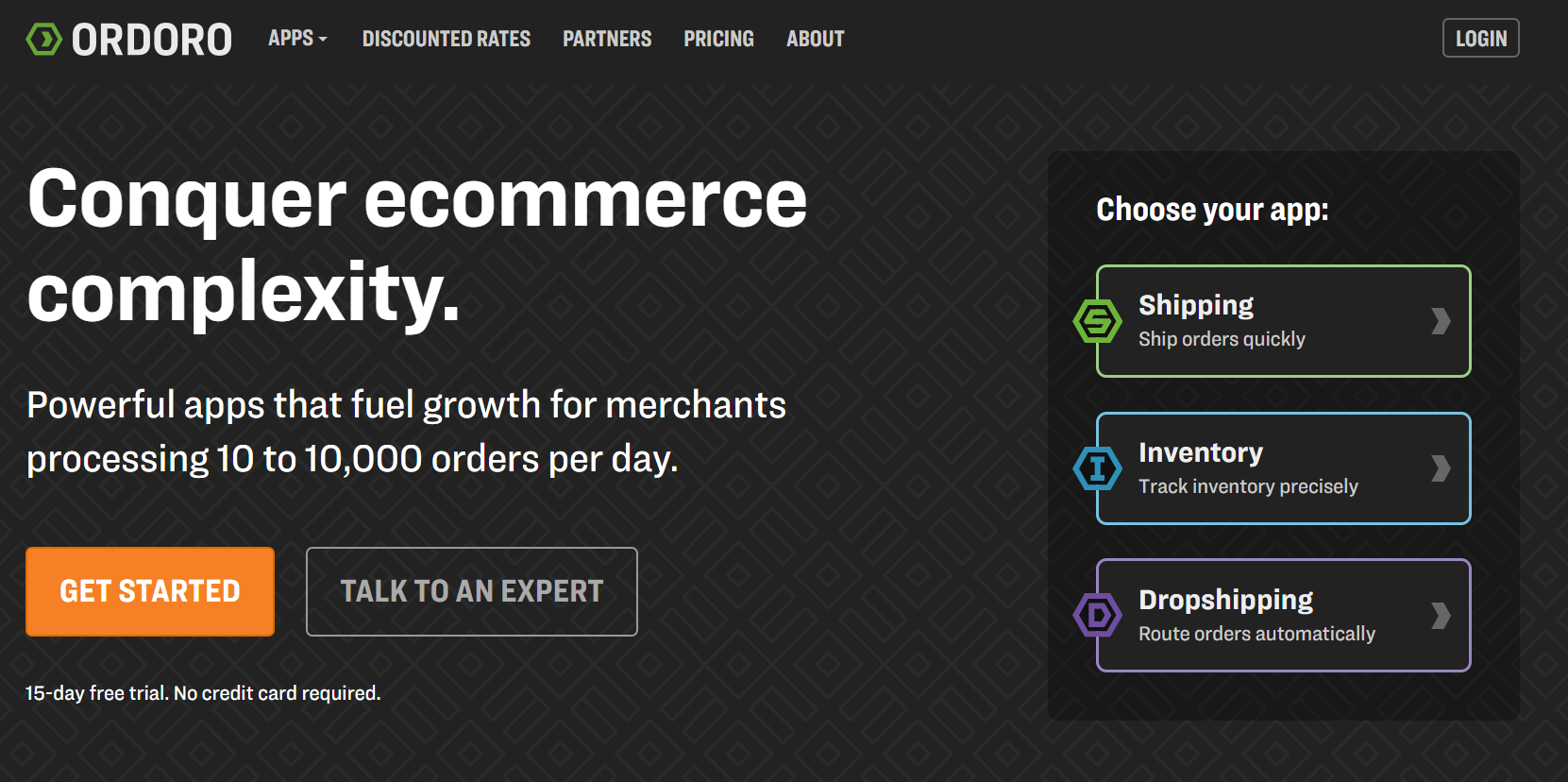
With Ordoro, you can sync stock levels across all your sales channels automatically. This keeps your inventory counts accurate and up-to-date. The software also sends alerts when stock runs low, so you can reorder in time.
Ordoro includes tools for creating purchase orders and tracking goods receipts. This makes it easier to manage your supply chain and keep your shelves stocked.
| Pros | Cons |
| Auto-syncs stock across channels | Higher pricing compared to basic options |
| Handles purchase orders | May have more features than small businesses need |
| Offers kitting and bundling tools | Learning curve for new users |
For businesses that sell product bundles, Ordoro offers kitting and bundling capabilities. You can also use it to manage bills of materials and manufacturing orders if you produce your own apparel items.
5. Cin7
Cin7 is a cloud-based inventory management software for apparel businesses. It helps you track stock across multiple locations and sales channels. The platform offers features like purchase management and supplier oversight.
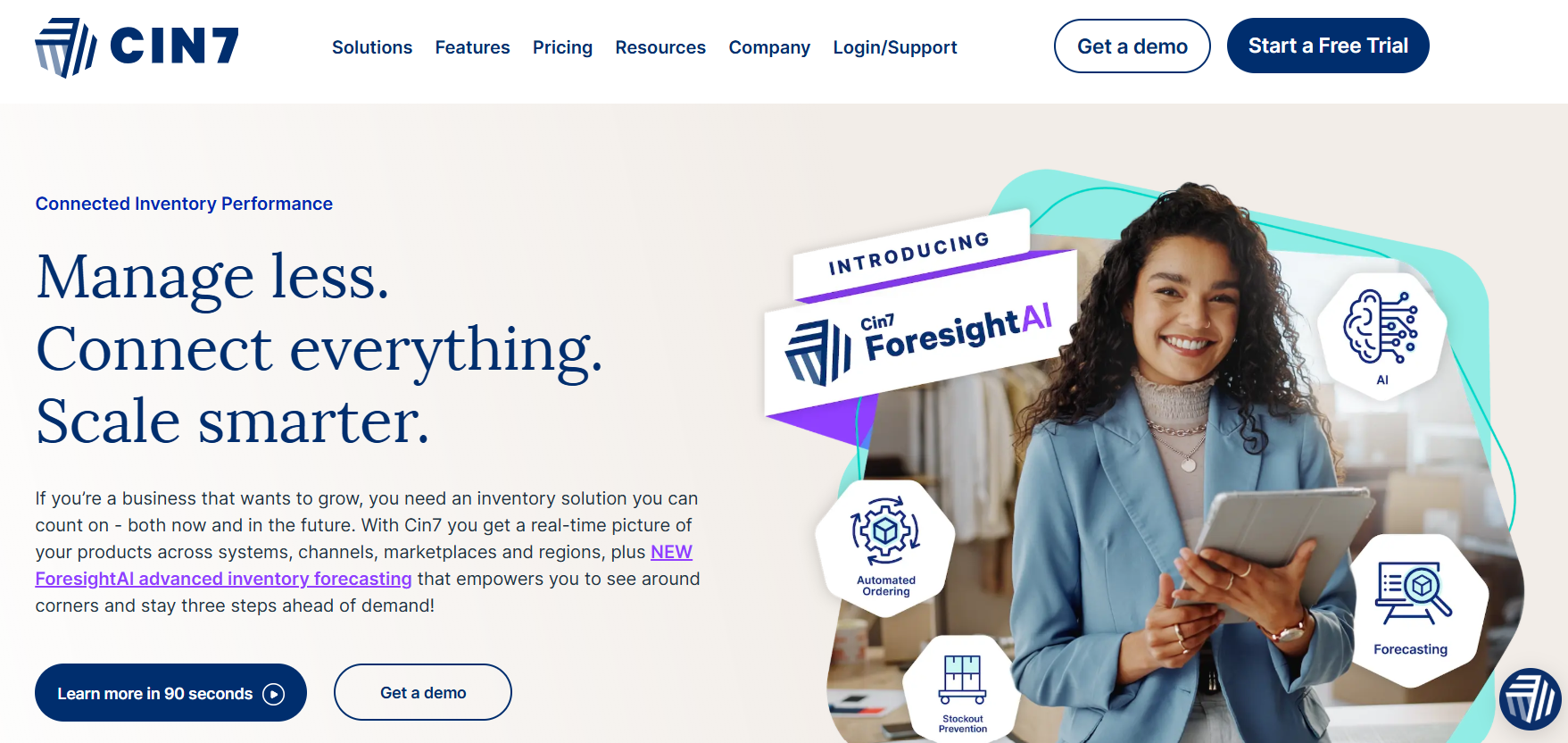
Cin7 integrates with accounting software to give you detailed reports on your clothing operations. You can use it to manage inventory, view sales data, and monitor stock movements.
This tool works well for small to medium-sized apparel companies. It’s useful for retailers, wholesalers, and online sellers. Cin7 can help you streamline your stock control and meet customer demand.
Pricing for Cin7 starts at $349 per month. It offers different plans to fit various business needs.
| Pros | Cons |
| Multi-channel inventory tracking | Higher starting price than some competitors |
| Integrated with accounting software | May have a learning curve for new users |
| Low-stock alerts | Some features only in advanced plans |

Create your online store in minutes!
Looking to sell online? Develop and launch your store with 10Web AI Ecommerce Website Builder.
Free apparel inventory management templates
For businesses looking for a cost-effective way to manage their apparel inventory, free templates and spreadsheets can provide a practical starting point. These tools are especially useful for small retailers or startups with limited budgets who need a straightforward method to track and organize inventory.
Apparel inventory management templates
Free templates designed specifically for apparel businesses simplify the process of recording and monitoring inventory. These templates often include fields for tracking item categories, sizes, colors, stock quantities, and reorder levels. They help businesses stay organized without the need for advanced software, making them ideal for managing smaller inventories.
Clothing inventory management excel sheets
Excel sheets for inventory management offer more flexibility and customization. With pre-built formulas and tabs for different metrics, these spreadsheets can track sales, calculate inventory turnover, and identify trends. Users can easily modify these templates to suit their specific needs, such as adding columns for seasonal data or supplier details.
Benefits of free templates
Using free templates is an accessible way to improve inventory control without investing in complex systems. They enable better organization, reduce errors in stock tracking, and support decision-making. While they may lack the advanced features of paid software, free tools are a great option for small apparel retailers to get started with inventory management.
Conclusion
Apparel inventory management software is a vital tool for streamlining fashion retail operations, improving efficiency, and reducing costs. By choosing the right solution, businesses can effectively manage stock levels, enhance customer satisfaction, and focus on growth instead of inventory challenges. With the insights and options outlined in this article, you’re well-equipped to select a system that fits your needs and drives your apparel business forward.









